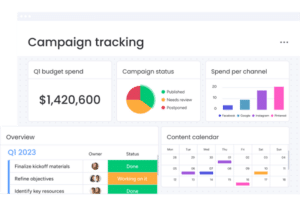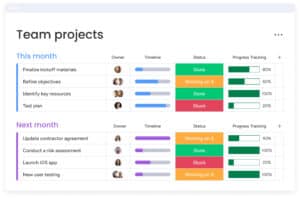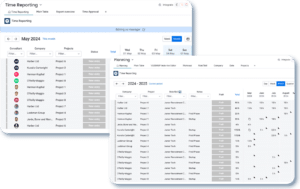Introduction
The Evolution of Integration Strategies
In an era where digital transformation is more than a buzzword, businesses are constantly seeking robust and efficient ways to integrate their various tools, platforms, and data repositories. Traditional methods of integration, such as File Transfer Protocol (FTP) and Electronic Data Interchange (EDI), have been used for decades but are increasingly being overshadowed by more modern and agile solutions. This shift emphasizes the role of API (Application Programming Interface) in modern integration strategies.
The Growing Importance of APIs in Business
APIs are not just a technical term reserved for your IT department; they are a critical component of contemporary business strategies. These interfaces allow different software applications to communicate with each other, opening a world of possibilities for automation, data analytics, and customer engagement. As we move toward a more connected and data-driven ecosystem, understanding the role of APIs becomes imperative for companies looking to stay competitive.
Focus of This Blog Post
This blog post aims to delve deep into the role of API (Application Programming Interface) in modern integration strategies. We’ll explore what APIs are, how they have evolved from traditional integration methods, and why they are indispensable for businesses today. Whether you’re in Sales, Marketing, Project Management, Operations, IT, or HR, understanding the role of API-based integration can help you streamline processes and make data-driven decisions.
What is API?
Defining API: The Basics
An API, or Application Programming Interface, is a set of protocols, routines, and tools for building software applications. It essentially serves as a bridge that allows two different software applications to communicate and interact with each other. The API spells out the methods and data formats that software components should use, thereby standardizing the process for different software solutions to work together. In today’s digital world, understanding the role of API in modern integration strategies is critical for business success.
Types of APIs: REST, SOAP, GraphQL, and More
APIs come in different flavors, each designed to serve specific needs. Some of the most commonly used types include:
- REST (Representational State Transfer): Best suited for web services, RESTful APIs use standard HTTP methods and are known for their scalability and stateless nature.
- SOAP (Simple Object Access Protocol): Often used for enterprise-level applications, SOAP APIs offer robust security features but can be more complex to implement.
- GraphQL: A more flexible alternative to REST, GraphQL allows clients to request only the data they need, making it efficient for complex systems.
- Streaming APIs: These APIs send data in real-time and are ideal for applications that require real-time information, such as financial markets or social media feeds.
How APIs Work: The Request and Response Model
At its core, an API works based on a request and response model. One software component (the client) sends a request to another (the server), which processes the request and sends back a response. This exchange can involve retrieving, sending, updating, or deleting data. Given the crucial role of API in modern integration strategies, understanding this request and response model is vital for optimizing business operations.
The Pivotal Role of API in Software Development
APIs are fundamental in modern software development. They allow for the quick building of applications by providing reusable functions that developers can call upon. This reduces the amount of code that needs to be written from scratch, saving time and resources. APIs also offer a layer of security as the end-user interacts only with the API, not the underlying codebase. This makes them invaluable assets in the realm of modern integration solutions.
Omnitas Newsletter
Sign up for our monthly newsletter to stay up-to-date on our latest blog articles, videos and events!
Thank you!
You have successfully joined our subscriber list.
The Historical Context of Integration
The Journey from FTP to API
Long before APIs took center stage, businesses relied on methods like File Transfer Protocol (FTP) to move data between different systems. FTP, although functional, was primarily designed for transferring files rather than for facilitating real-time data exchange. As businesses grew more complex and the demand for instant data sharing escalated, it became clear that newer, more agile methods were needed. This awareness significantly marked the growing role of API in modern integration strategies.
Limitations of Traditional Integration Methods
Before the rise of APIs, methods like Electronic Data Interchange (EDI), batch processing, and even manual data entry were prevalent. These methods had several limitations:
- Scalability: Traditional methods couldn’t easily scale to meet the growing data and system integration requirements.
- Latency: Real-time or near-real-time data exchange was often not possible.
- Complexity: Managing multiple point-to-point integrations led to a tangled web of connections that were hard to maintain.
- Cost: High costs associated with hardware, software, and manual labor made these methods less sustainable.
The Paradigm Shift to API-Based Integration
The limitations of traditional integration methods led to the advent of APIs, which offered a more streamlined, scalable, and secure way to connect different systems. The paradigm shift toward API-based integration wasn’t merely a technological change; it was a business imperative. In a world where real-time data and automation have become the norm, understanding the role of API in modern integration strategies is essential for any competitive business.
The Rise of API-First Strategies
Given the capabilities of APIs, many companies are adopting an API-first strategy. This approach involves designing the API specifications first before developing the software that will utilize it. The API-first strategy indicates a broader organizational shift toward a more interconnected and data-driven business model. It has reinforced the role of APIs as not just a technical solution but as a strategic asset in modern business.
Modern Integration Strategies
Current Landscape of Integration Solutions
As the digital landscape has evolved, so too have the strategies to integrate different platforms, services, and data sources. Companies now have a plethora of options, each with its own advantages and drawbacks. In this crowded field, the role of API in modern integration strategies has proven to be pivotal.
Point-to-Point vs Middleware vs API-Based Integration
Let’s examine the three major approaches to integration:
- Point-to-Point Integration: Here, each system is directly connected to every other system with which it needs to share data. While this method is straightforward, it becomes increasingly complex as more connections are added, leading to a “spaghetti” architecture.
- Middleware Integration: Middleware acts as a centralized hub where data from different sources can be collected, transformed, and routed. While this alleviates some of the complexity of point-to-point integration, it adds an additional layer that needs to be managed.
- API-Based Integration: This approach leverages APIs to create a robust, flexible, and scalable integration infrastructure. API-based integration is modular and allows businesses to connect a variety of systems without creating a tangled mess of connections.
The Ascendancy of API-First Integration
In contrast to traditional methods, API-first integration provides a far more flexible and agile framework. Organizations can build, test, and deploy new features or connections much faster. This speed and agility have catapulted the role of API in modern integration strategies to the forefront, making it the preferred method for many businesses.
API as the Cornerstone of Modern Integration
APIs have a few characteristics that make them ideal for modern integration:
- Modularity: APIs are like building blocks that can be easily added, removed, or replaced without affecting the overall system.
- Interoperability: APIs enable disparate systems to work together smoothly, irrespective of the languages or technologies they were built on.
- Standardization: APIs provide a standard way of accessing functionalities across different software applications, making it easier to manage and coordinate various integrations.
Why APIs are Essential for Modern Integration
The Scalability Factor
As businesses grow and evolve, their data and system integration needs also change. Traditional methods of integration often require a significant amount of time and resources to adapt to these changes. APIs, on the other hand, offer a scalable solution. With APIs, you can easily add more features or make modifications without overhauling the entire system. This level of scalability is a key aspect of the role of API in modern integration strategies.
Real-Time Data Exchange
In today’s fast-paced business environment, having access to real-time data can be a game-changer. APIs facilitate real-time data exchange between systems, enabling businesses to make more timely and informed decisions. Whether it’s real-time analytics, tracking user engagement, or monitoring system performance, APIs make it all possible.
Enhanced Security Features
Security is a paramount concern in any integration strategy. APIs come with built-in security protocols like OAuth and API keys, providing an extra layer of security. This not only helps in safeguarding sensitive data but also in compliance with regulatory standards, making APIs an integral part of modern secure data strategies.
Agility and Speed of Development
APIs enable rapid development and deployment of new services and functionalities. With APIs, companies can quickly integrate new technologies or data sources to adapt to market changes or to roll out new offerings. This agility is another reason that underscores the pivotal role of API (Application Programming Interface) in modern integration strategies.
Fostering Innovation
APIs are not just about connecting existing systems; they are also enablers of innovation. By providing developers with the tools to build upon existing platforms, APIs open up new avenues for creativity and value addition. This encourages a culture of innovation that can give businesses a competitive edge.
Use Cases Across Industries
The Ubiquity of API-Based Integration
API-based integration is not confined to any specific sector or industry; its versatility and efficiency make it a universal tool. Companies, whether in Sales, Marketing, Project Management, Operations, IT, or HR, all stand to benefit by understanding and leveraging the role of API in modern integration strategies.
API in Healthcare: Improved Patient Experience
In healthcare, APIs enable seamless integration between Electronic Health Records (EHR), patient management systems, and telemedicine platforms. This not only streamlines operations but also enhances the patient experience by providing real-time access to medical records, test results, and appointments.
API in Finance: Real-Time Data and Transactions
Financial institutions make extensive use of APIs to connect various software platforms ranging from trading platforms to customer databases. APIs facilitate real-time data flow, enabling instantaneous updates on stock prices, account balances, and transaction confirmations.
API in Retail: Personalization and Inventory Management
In the retail sector, APIs help integrate Point of Sale (POS) systems with inventory and customer relationship management (CRM) software. This provides retailers with insights into customer behaviour and preferences, enabling highly personalized shopping experiences. It also ensures real-time tracking of inventory levels, reducing overhead costs.
API in Manufacturing: Streamlining Operations
For manufacturing firms, APIs can integrate different components of the supply chain, such as procurement, production, and distribution. This not only enhances operational efficiency but also provides data-driven insights for optimizing resource allocation and reducing waste.
API in Education: Enhanced Learning Management Systems
Educational institutions use APIs to connect Learning Management Systems (LMS) with other platforms like online libraries, assignment submission portals, and even parental notification systems. This fosters a more cohesive and streamlined educational experience for both educators and students.

Challenges and Pitfalls
Balancing Flexibility and Security
While APIs offer a multitude of benefits, they also come with their own set of challenges. One of the primary concerns is striking the right balance between flexibility and security. Overly restrictive APIs can hamper usability and limit integrations, whereas overly flexible APIs can expose the system to security risks. Understanding this dynamic is critical to maximizing the role of API (Application Programming Interface) in modern integration strategies.
Version Management
APIs are continually evolving. New features are added, bugs are fixed, and security loopholes are patched. As a result, version management becomes a significant challenge. Companies need to ensure that both producers and consumers of the API are in sync and that transitioning to a new version doesn’t break existing integrations.
Rate Limiting and Throttling
APIs can handle a finite amount of requests within a given time frame. Exceeding these limits can lead to throttling or even temporary suspension of services. Rate limiting becomes a challenge when integrating systems that have high-volume or real-time data exchange requirements.
Poor Documentation and Lack of Standardization
Poorly documented APIs can be a nightmare for developers. Without clear instructions and examples, integrating an API can turn into a trial-and-error process, costing time and resources. Furthermore, a lack of standardization can result in inconsistent behaviour and make it difficult to manage multiple APIs.
Vendor Lock-In
Using third-party APIs may lead to vendor lock-in, where a company becomes overly reliant on a single service provider. This can pose a risk if the vendor changes its pricing, alters the API, or discontinues the service altogether.
How to Get Started with API-Based Integration
Conduct a Needs Assessment
The first step in embarking on an API-based integration journey is to conduct a thorough needs assessment. Identify the systems that require integration, the kind of data to be exchanged, and the overall business objectives you aim to achieve. This will help you understand the role of API in your specific integration strategy.
Choose the Right API Type
APIs come in various types, including REST, SOAP, and GraphQL. Each type has its own set of advantages and limitations, so it’s crucial to choose one that aligns with your business needs and technical capabilities.
Assemble a Skilled Team
Once you’ve identified your needs and chosen an API type, it’s time to assemble a team. Look for individuals with expertise in API development, system integration, and data management. Your team should also include stakeholders from the business side to ensure that the integration aligns with broader business goals.
Develop or Procure the API
Depending on your needs, you can either develop an API in-house or use third-party services. Many companies offer API solutions that can be customized to fit specific business requirements. If you choose to develop your own, ensure it complies with industry standards and best practices for security and performance.
Test Rigorously
Before deploying the API in a live environment, it is essential to test it rigorously. This involves not just checking for functionality but also for security vulnerabilities, performance issues, and compatibility with existing systems.
Monitor and Optimize
After deployment, continuous monitoring is crucial for ensuring optimal performance and security. Regularly update the API to patch any vulnerabilities and to add new features based on user feedback and changing business needs.
Training and Documentation
Last but not least, train the users and prepare comprehensive documentation. Good documentation can be a lifesaver when issues arise, and well-trained users can make the most out of the API-based integration, fulfilling its role in modern business strategies effectively.
Conclusion
The Evolving Role of API in Integration Strategies
We’ve covered a lot of ground in this blog post, from understanding what an API is to diving into its historical context, modern strategies, industry use cases, challenges, and a guide to getting started. It’s clear that the role of API in modern integration strategies is not just pivotal but also ever-evolving. As businesses continue to adapt to technological advancements, APIs will undoubtedly play an increasingly significant role in shaping efficient, scalable, and innovative solutions.
The Power of Preparedness
While APIs offer a multitude of benefits, it’s essential to approach them with a sense of preparedness. This involves understanding your own needs, assembling the right team, choosing the correct API type, and being aware of the challenges and pitfalls. Armed with this knowledge, you can fully leverage the benefits of API-based integration and stay ahead in the competitive landscape.
Unlocking Business Potential
API-based integration does more than just connect systems; it unlocks new realms of business potential. From enabling real-time data exchange and fostering innovation to streamlining operations across various industries, the applications are limitless. Therefore, understanding and utilizing the role of API in modern integration strategies is not an option but a necessity for businesses aiming for sustained growth and success.
Looking Ahead
As we look to the future, APIs will continue to evolve, driven by emerging technologies like Artificial Intelligence, the Internet of Things, and Blockchain. Organizations that can adapt and integrate these advancements into their existing systems will not only optimize their operations but also set themselves up for future success.
If you’ve found this exploration into the role of API in modern integration strategies beneficial, we invite you to stay ahead of the curve by subscribing to our monthly newsletter. We publish insightful content covering technology trends, integration solutions, and business strategies. By subscribing, you’ll receive these valuable insights straight to your inbox, keeping you well-informed and ahead of the competition. Click the button below to subscribe and never miss an update!
























